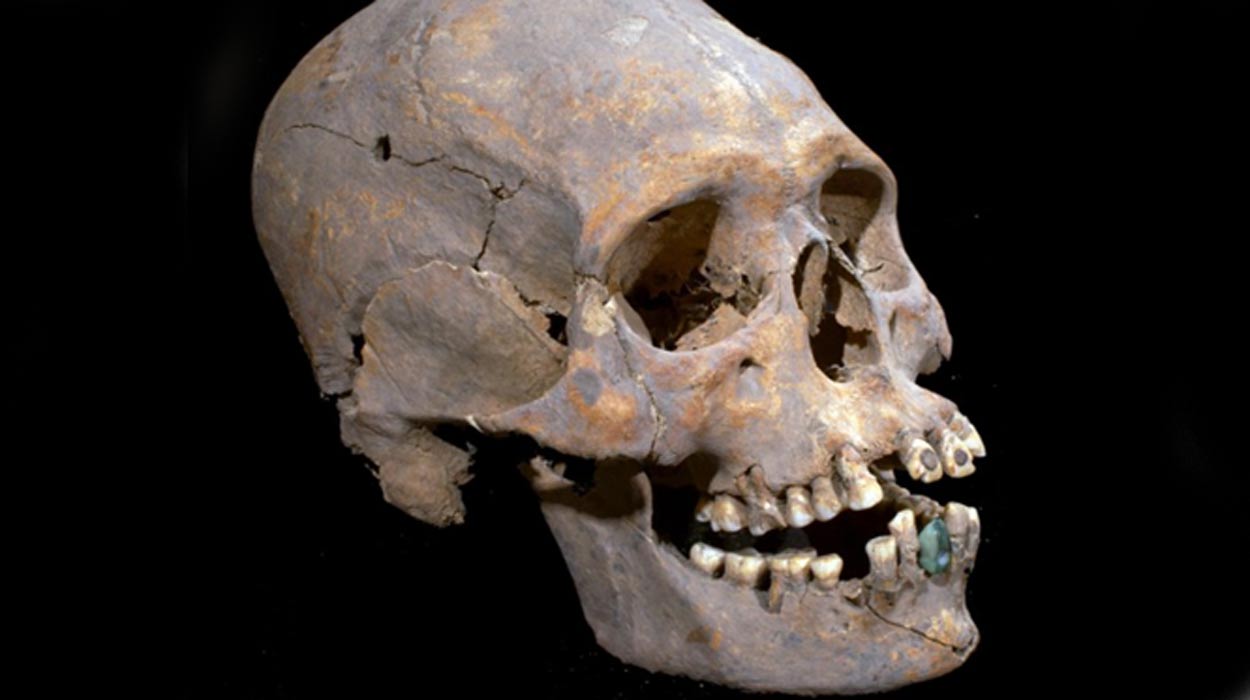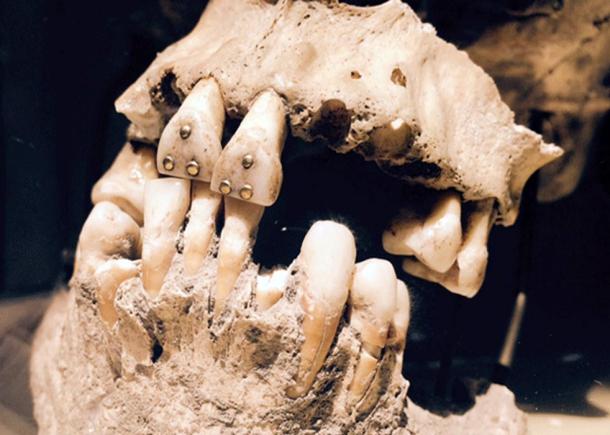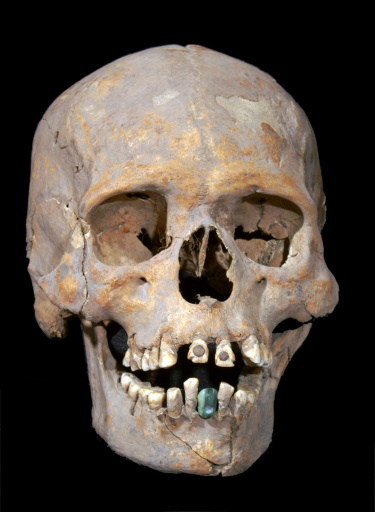The 1600-Year-Old Skeleton of an Upper-Class Woman whose skull was purposely deformed and teeth encrusted with minimal stones was found by archaeologists near ancient Teotihuacan ruins in Mexico.

Archaeologists who found the 1,600-year-old skeleton near Mexico’s ancient Teotihuacan site say the woman was 35-40 when she died, intentionally deformed her skull and encrusted her teeth with minimal stones.
When she died between the ages of 35 and 40, the woman was buried with 19 jars that served as offerings, the National Anthropology and History Institute said.
The institute said in a statement that her cranium had been deformed intentionally by binding a board to the front of her head in “a very extreme” manner, a technique commonly used in Mayan regions in southern Mexico and Central America.
The Mayas are credited with developing the only writing system native to the Americas, as well as the most sophisticated calendar.
The Maya are also credited with developing a sophisticated knowledge of cosmetic dentistry as they were known to decorate teeth by embedding them with precious stones or filling them with incrustations.
Tiny holes were carved out of the skulls of the ancients and grooves and notches made to hold semi-precious stones, which were attached with an adhesive made out of natural resins, such as plant sap, mixed with other chemicals and crushed bones.
The dentists likely had a sophisticated knowledge of how to drill into teeth without hitting the pulp inside.

Gold-studded teeth, Pre-Columbian Explorer.
Last year, archaeologists discovered liquid mercury in a subterranean tunnel beneath the Temple of the Feathered Serpent in Teotihuacan, which may represent an underworld river leading the way to a royal tomb or tombs.
The remains of the kings of Teotihuacan, some of the most powerful rulers of the pre-Hispanic world, have never been found.
Such a discovery would be monumental as it would unveil many of the mysteries surrounding this ancient civilization.
The enigmatic pre-Hispanic city of Teotihuacan, some 50 kilometers (30 miles) north of Mexico City, thrived between the first and eighth centuries, after which its civilization vanished.
Its two majestic Sun and Moon pyramids are major tourist attractions.

The 1,600-year-old skeleton of an upper-class woman found near Mexico’s ancient Teotihuacan wore a prosthetic lower tooth made of a green stone known as serpentine.





